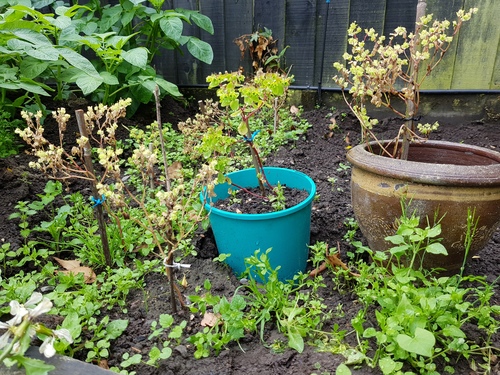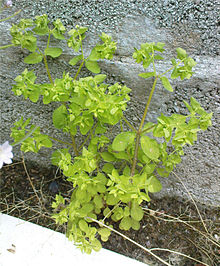Radium weed transplant and use feedback
The re-planting of the weeds was quite successful, as shown in the attached photo. The one in the green pot is the one from your garden, and is doing the best. The others are from your orchard area. The two at front left and in the brown pot are looking as if they are growing well. Three or four others in the background aren’t looking so good and will probably not make it. Interestingly, on my return home I found several plants growing around our house (now that I have seen what they look like), mainly small, but all looking healthy. When I was re-planting them some were slightly damaged, so I broke the stems and applied the milk to a red dis-coloured area of sun damaged skin on my cheek. Within a couple of hours it was stinging, and the next day it was quite inflamed and raw. It settled to a scab which was gone in about a week, with the redness considerably reduced, so I regard that as successful. The following week, I applied some of the milk to a couple of spots on my nose, probably a bit too liberally, as the next day it was very inflamed, and even bleeding, but again it healed within about a week with a noticeable improvement in the spots. So my conclusion is that the milk is very effective, but quite aggressive, so care is needed not to overdo the application, as the result is quite disfiguring in the short term. I will continue to use it, and would recommend it, subject to the cautions noted.
December 12, 2018

